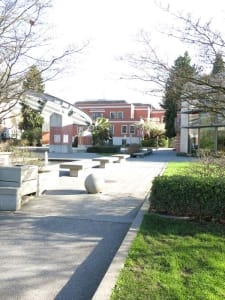 In all my demos and workshops I often say painting from photos is the reason that the end result of so many artist paintings end up so mediocre. Well, that is the polite version. It usually comes out like this, “Photos are the reason you paint so bad.” :)
In all my demos and workshops I often say painting from photos is the reason that the end result of so many artist paintings end up so mediocre. Well, that is the polite version. It usually comes out like this, “Photos are the reason you paint so bad.” :)
I’ll try to outline my reasoning throughout this article.
Composition
First and foremost, most photos the average person takes are un-composed and shot on auto. Some make great snapshots but nothing really great to paint from. I’ve done it, sure. But I refuse to anymore.
At minimum use the rule of thirds by placing the main subject in one of the four quadrants. Then start looking for lead in lines, overlapping elements, reflections, lighting, cast shadows, etc. Just being more conscious of the composition will help improve what you get.
Focus
Since most users use the ‘auto’ feature on their camera, the depth of field is large. This means ‘everything’ is in focus. Which usually translates into everything being painted in focus as well. Uggg, boring. Don’t fall into that trap.
Look around you. Go outside and focus on a tree, a door, a bicycle, anything really. Then notice how you can still see your entire environment in your peripheral vision and how it gets more blurry the farther your peripheral vision extends. Use this experience to give your painting more life by making edges softer here and there. Heck, take a risk and lose an edge of something as well.
This doesn’t mean you have to start taking photos with all blurry backgrounds, but that does help. What I want to get across is to try treating your photo like a large vista with some objects/areas blurry and others in focus. Take a chance and blur those edges.
- All Elements Blurred
- Blurred with Elements of Focus
Lighting
It’s not all your fault, the camera has known limitation. Darks are too dark and lights are too light, all depending on where you focus and the camera meters from.
Cameras have a light meter inside and will adjust the exposure depending on what you focus on. You focus in the shadows and the lights are too light. You focus in the lights and the shadows are too dark. It’s just the way it is with today’s technology.
If you are out taking photos specifically to use as reference material, take two photos of each scene. One metered (focused) in the light (below left), ideal for your lights but making your shadows darker, and the other metered (focused) in the dark (below right), making your shadows as you see them but your lights to bright. With these two photos you have documented a full range of light in the scene and can use both photos as reference.
- Metered in the Light
- Metered in the Shadows
I also recommend taking your reference photos during the morning or evening hours when the sun is lowest on the horizon so you can get impressive and interesting shadows.
Moving Forward
Yes, painting from photos is a necessity and I would say the majority of artists I encounter do. It is 2015 after all. :D
When starting out on a new painting, remember to be the creator. Adjust the composition and design by cropping your image for the best result, remove items that you don’t need, add elements that will make the painting flow better, intentionally make edges sharp, blurred or lost and make a conscious decision to not use the pure white or pure black* in a painting. Let there be room to go further if need be.
Think of it this way, you spend anywhere from three to ten (or more) hours creating a painting. Take at least five minutes to plan it.
I’ll aim to write more on this as time permits and if you have any questions please leave them below in the comments.
* It is just fine to use black as a colour on your palette as black is nothing more than a low chromatic blue. In this instance I am referring to the pure dark value.





I am interested in this subject Michael. I have heard before it is probably a good idea to work from a brief sketch, and a photo reference. You are right – I put the camera on auto and try to envision a good composition. Funny, what looks good at the time does not always. I try to take about 10 shots though hoping one will be good. What should I set my camera on say for a tree scene (many trees).
Diane,
A lot of the time I take a photo intentionally un-composed and crop to the composition I want after the fact. Less stress and with today’s high res images, it allows for cropping on a smaller area and still being able to print them. The lighting is usually the most important thing to me.
A setting for trees? That is a tough one, as it will all depend on the light and the effect you are going for. If you just have a point and shoot camera, take a photo looking into the shadow and another looking into the light.
If you have a more manual camera I would start on aperture mode and start at a f4 to get some loss in the depth of field. If it is too blurry I’d increase the aperture number to f8 and see what the results would be and go from there.
As soon as you start playing with the manual aspects of your camera it is a good idea to start using a tripod.
I hope this helps.